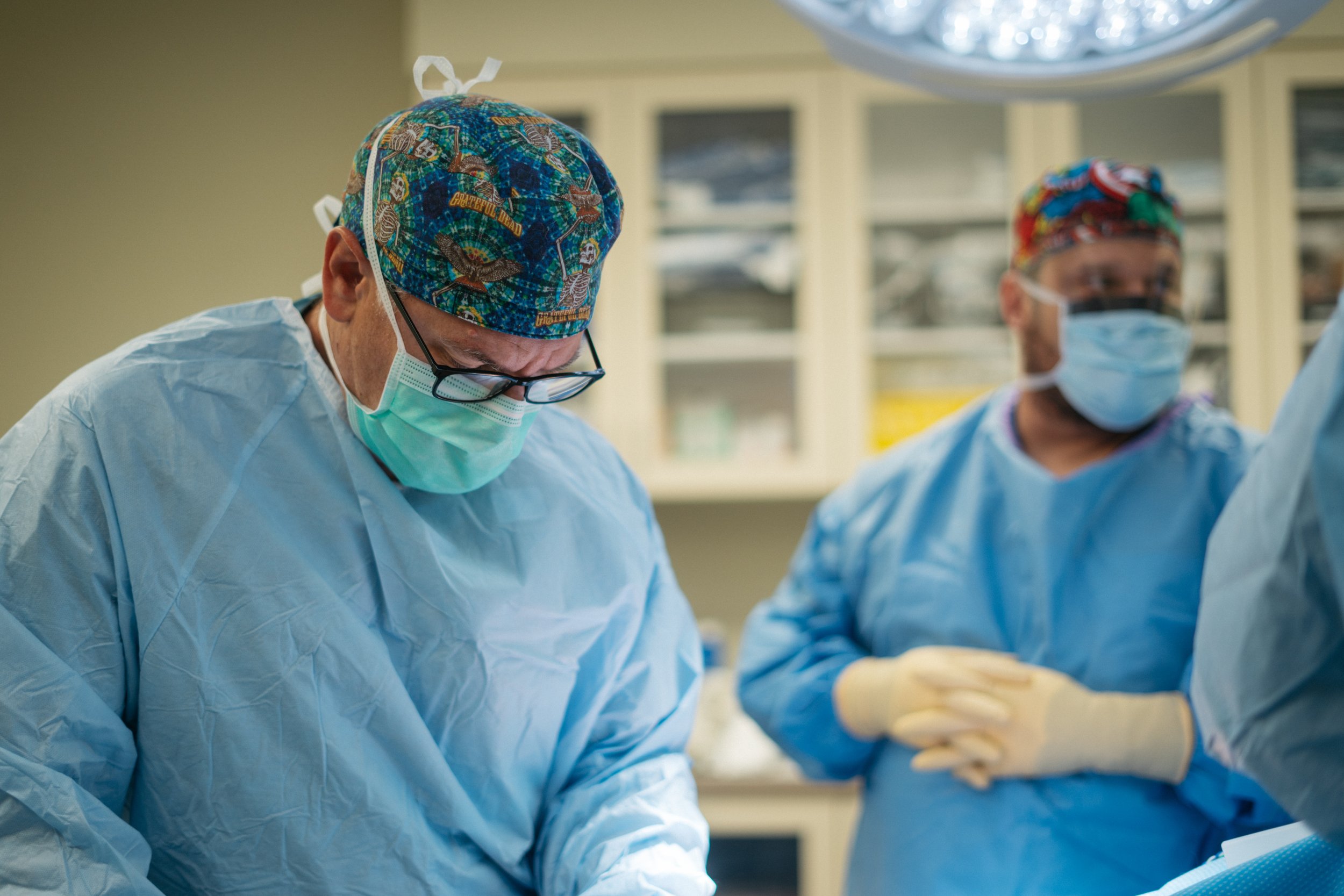
robotic-assisted knee replacement in San Antonio
Robotic-Assisted Knee Replacement
What is Arthritis?
The knee is made up of the femur (thighbone), the tibia (shinbone) and patella (kneecap). The two menisci, the soft cartilage between the femur and tibia, serve as a cushion and helps absorb shock during motion. Arthritis (inflammation of the joints), injury or other diseases of the joint can damage this protective layer of cartilage, causing extreme pain and difficulty in performing daily activities. Osteoarthritis is a type of arthritis.
What is Total Knee Replacement?
Total knee replacement, also called total knee arthroplasty, is a surgical procedure in which the worn out or damaged surfaces of the knee joint are removed and replaced with artificial implants.
What is Robotic-Assisted Knee Replacement?
Robotic-assisted knee replacement surgery is an alternative to the conventional knee replacement procedure. It is performed using robotic-arm technology that allows your surgeon to precisely perform the surgery through a smaller incision as compared to traditional surgery.
Indications of Robotic-Assisted Knee Replacement
Robotic-assisted knee replacement is indicated if you are suffering from degenerative knee diseases such as osteoarthritis. Your doctor may recommend surgery if non-surgical treatment options have failed to relieve your symptoms.
Robotic-Assisted Knee Replacement Procedure
The goal of total knee replacement surgery is to relieve pain and restore the alignment and function of your knee. Robotic-assisted knee replacement utilizes X-rays and CT scans to determine the damaged areas of the joint that need to be removed for the precise placement of the knee implant. Then, the damaged portions of the femur bone are cut at appropriate angles using specialized jigs. The femoral component is attached to the end of the femur with or without bone cement.
Your surgeon then cuts or shaves the damaged area of the tibia (shinbone) and the cartilage. This removes the deformed part of the bone and any bony growths, as well as creates a smooth surface on which the implants can be attached. Next, the tibial component is secured to the end of the bone with bone cement or screws.
Your surgeon will place a plastic piece between the implants to provide a smooth gliding surface for movement. This plastic insert will support the body’s weight and allow the femur to move over the tibia, like the original meniscus cartilage.
The femur and tibia with the new components are then put together to form the new knee joint.
To make sure the patella (kneecap) glides smoothly over the new artificial knee, its rear surface is also prepared to receive a plastic component. All these steps are performed with the help of the robotic arms.
With all the new components in place, the knee joint is tested through its range of motion. The entire joint is then irrigated and cleaned with a sterile solution. The incision is carefully closed; drains are inserted and a sterile dressing is placed over the incision.
Benefits of Robotic-Assisted Knee Replacement
The benefits of the robotic-assisted knee replacement include:
Smaller incisions
Rapid recovery
Precise placement of the implant
Reduced injury to adjacent tissues
Increased longevity of the implant
Our Locations
-

Alamo Heights
Address: 423 Treeline Park, Suite 350, San Antonio, TX 78209
-

Westover Hills
Address: 11212 State Highway 151, Medical Plaza 1, 2nd Floor, Suite 200, San Antonio, TX 78251
-

Medical Center
ADDRESS: 2833 Babcock Rd, Tower 2, Suite 435, San Antonio, TX 78229
-

Boerne
ADDRESS: 138 Old San Antonio Rd, Suite 302, Boerne, TX 78006
-

Southside
8726 Poteet Jourdanton Fwy Acc Rd, San Antonio, TX 78224
-

Castroville
Address: 346 County Road 4712, Castroville, TX 78009
-

Schertz
Address: 6051 FM 3009, Suite 260, Schertz, TX 78154

